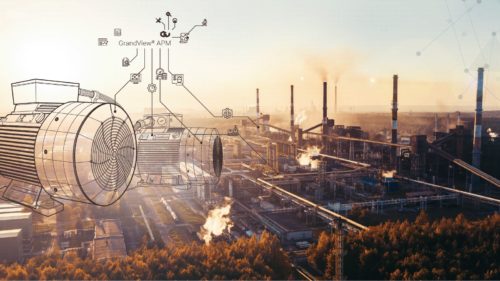Big Data, machine learning used to design gas separation membranes
Researchers have developed a method that combines Big Data and machine learning to selectively design gas-filtering polymer membranes to reduce greenhouse gas emissions and improve the next generation of batteries.
研究人员在哥伦比亚大学工程和大学sity of South Carolina have developed a method that combines Big Data and machine learning to selectively design gas-filtering polymer membranes to reduce greenhouse gas emissions. Their study is the first to apply an experimentally validated machine learning method to rapidly design and develop advanced gas separation membranes.
“Our work points to a new way of materials design and we expect it to revolutionize the field,” says the study’s PI Sanat Kumar, Bykhovsky Professor of Chemical Engineering and a pioneer in developing polymer nanocomposites with improved properties.
Plastic films or membranes are often used to separate mixtures of simple gases, like carbon dioxide (CO2), nitrogen (N2), and methane (CH4). Scientists have proposed using membrane technology to separate CO2from other gases for natural gas purification and carbon capture, but there are potentially hundreds of thousands of plastics that can be produced with our current synthetic toolbox, all of which vary in their chemical structure. Manufacturing and testing all of these materials is an expensive and time-consuming process, and to date, only about 1,000 have been evaluated as gas separation membranes.
Kumar and his collaborators at Columbia Engineering, the University of South Carolina, and the Max Planck Society in Mainz (Germany) created a machine learning algorithm that correlates the chemical structure of the 1,000 tested polymers with their gas transport properties, to investigate what structure makes the best membrane. They then applied the algorithm to more than 10,000 known polymers to predict which would produce the best material in this context.
This procedure identified some 100 polymers that had never been tested for gas transport but were predicted to surpass the current membrane performance limits for CO2/CH4 separations.
“Rather than experimentally test all the materials that exist for a particular application, you instead test a smaller subset of materials which have the most promise. You then find the materials that combine the very best ingredients and that gives you a shot at designing a better material, just like Netflix finding you the next movie to watch”, said Connor Bilchak, formerly a PhD student with Kumar and currently a post-doctoral fellow at the University of Pennsylvania.
Do you have experience and expertise with the topics mentioned in this content? You should consider contributing to our CFE Media editorial team and getting the recognition you and your company deserve. Clickhereto start this process.






